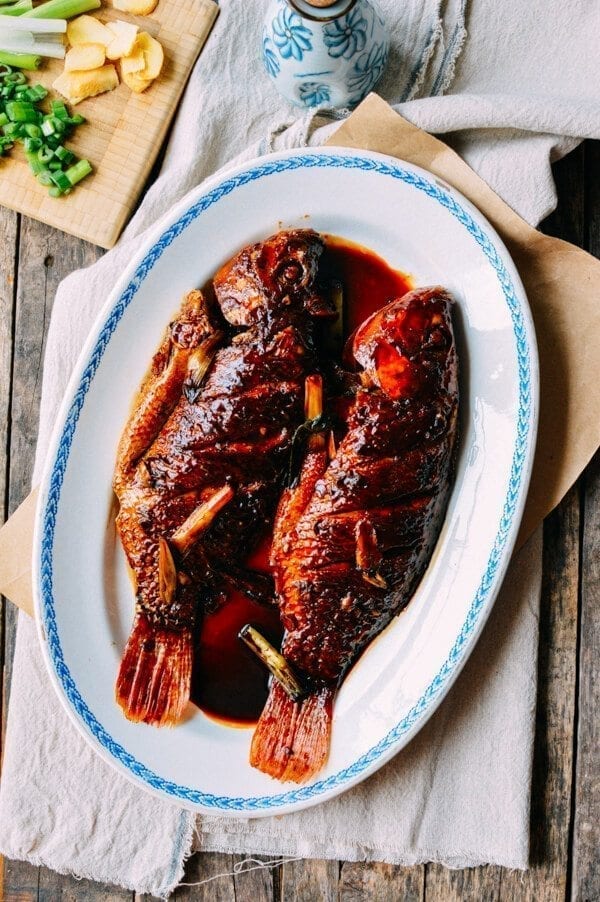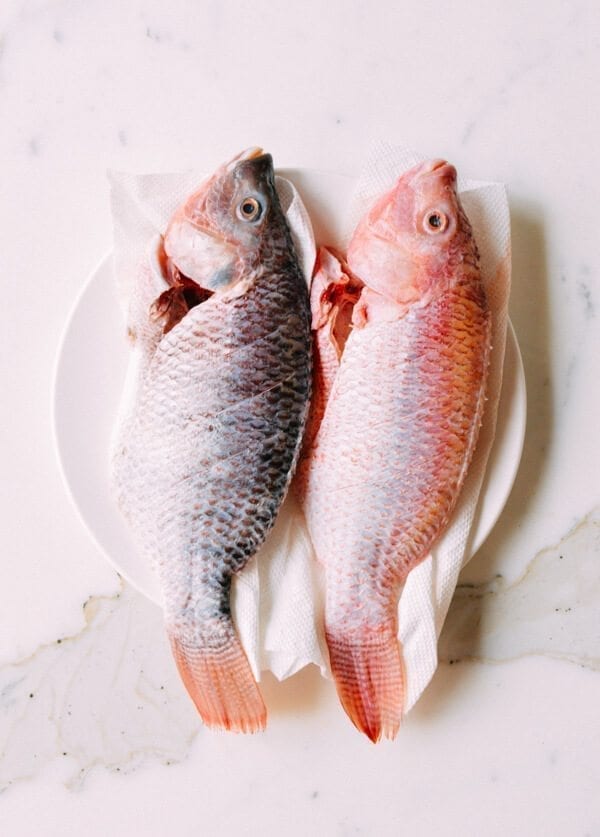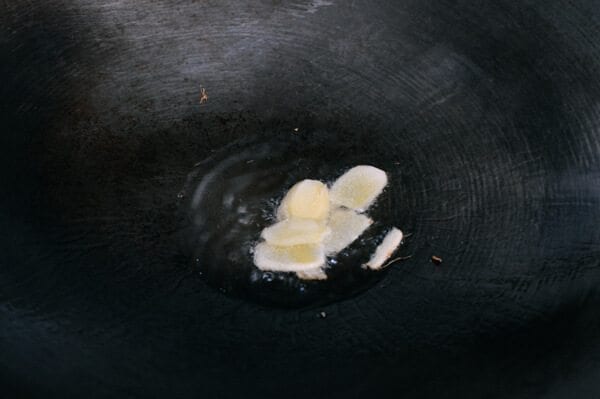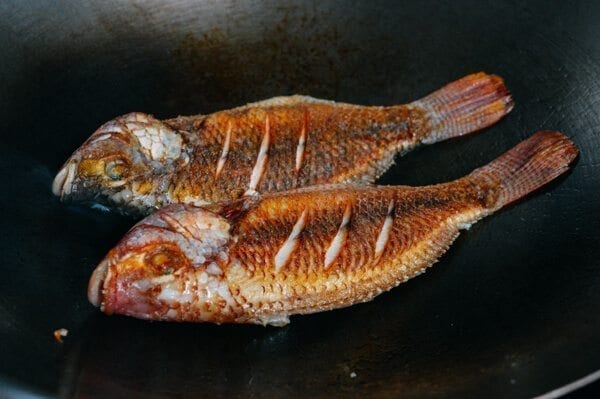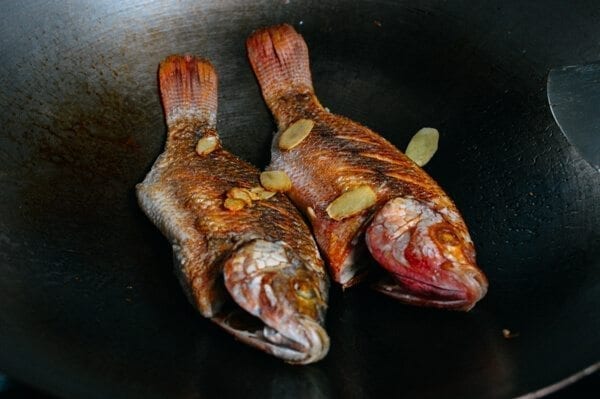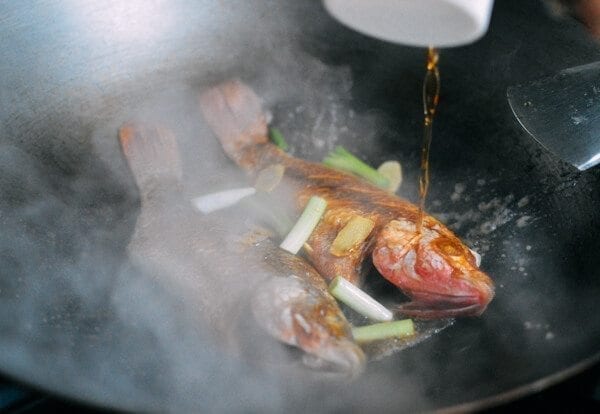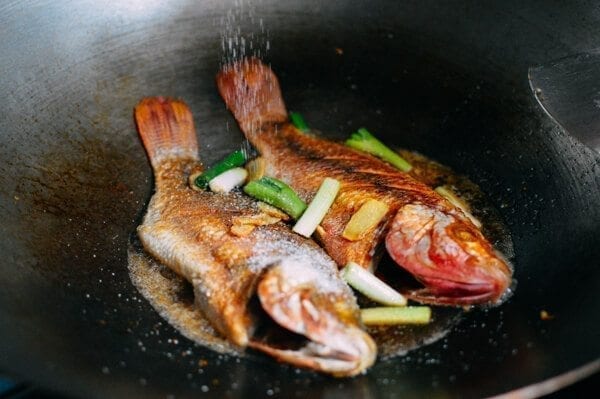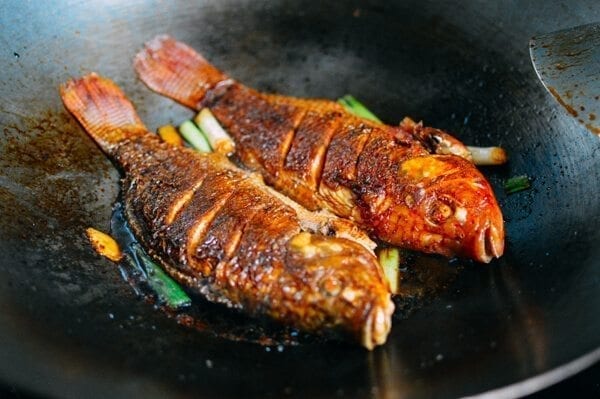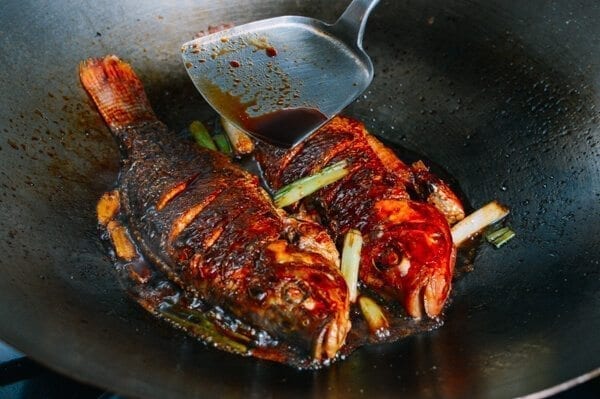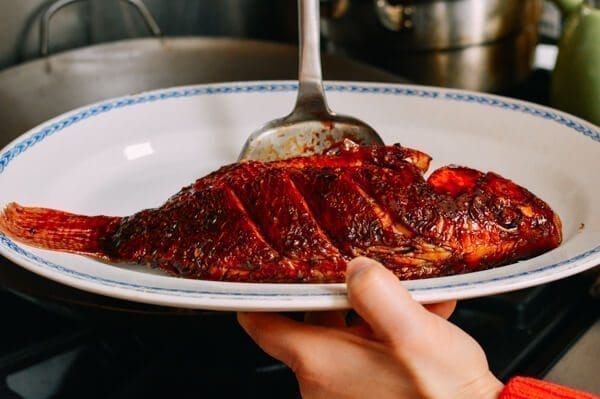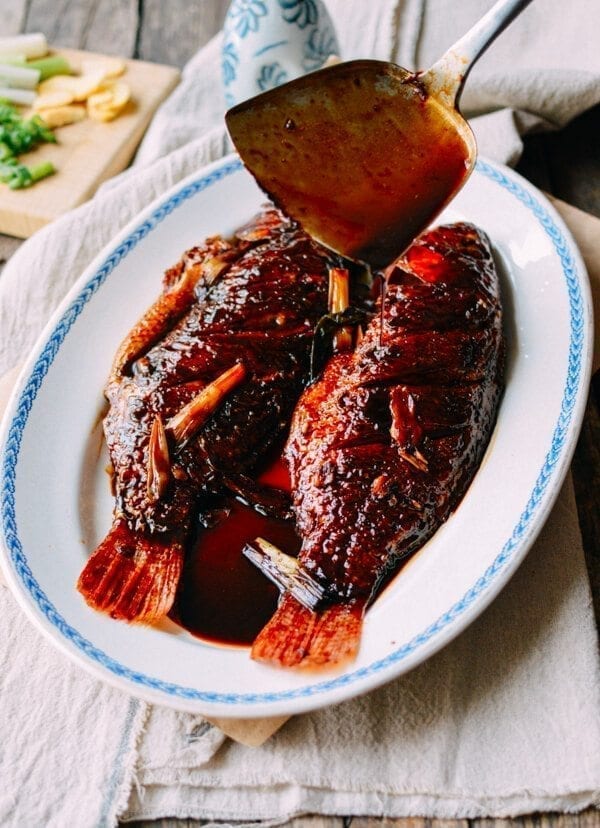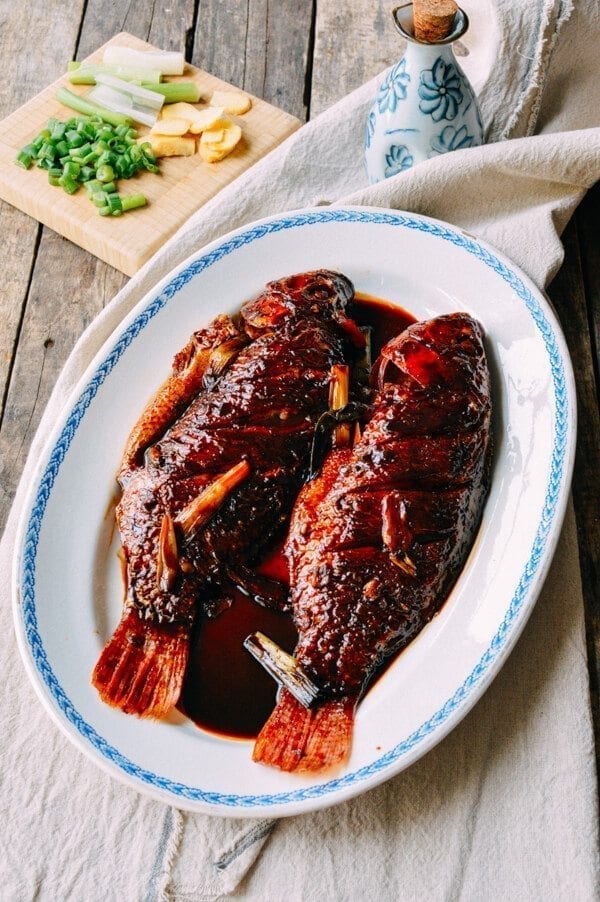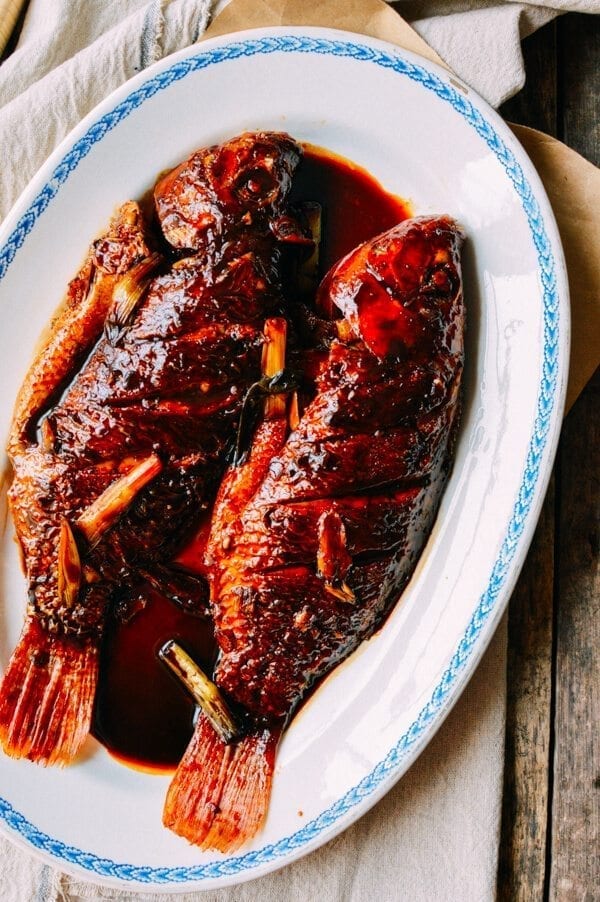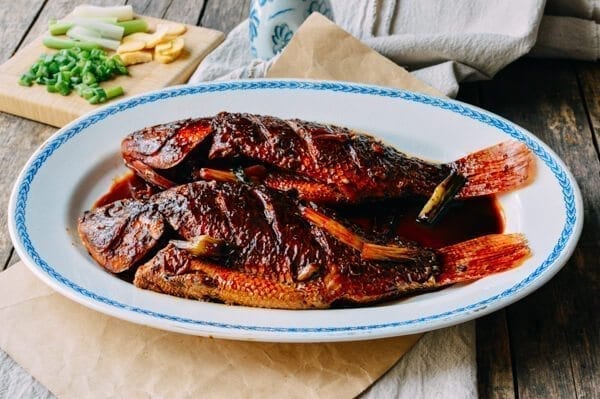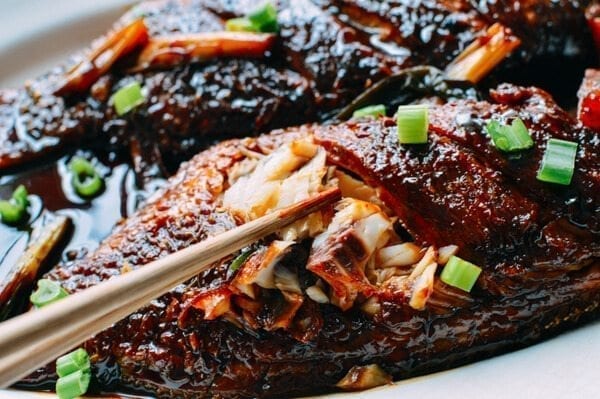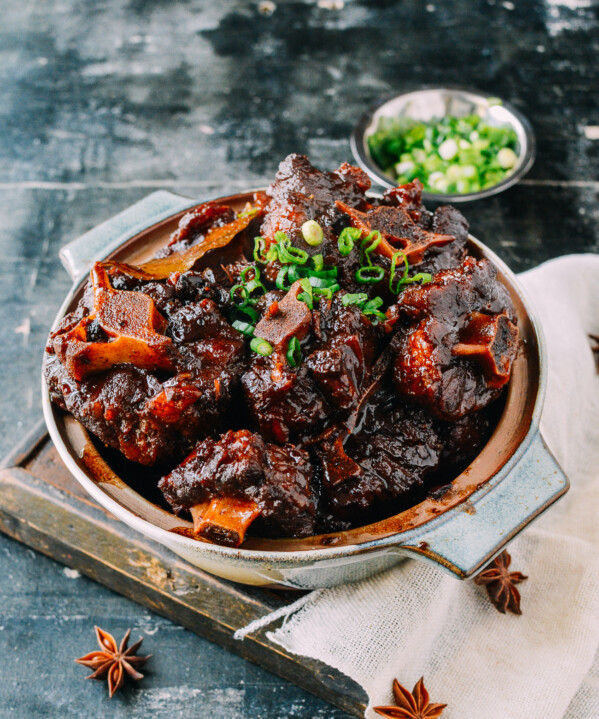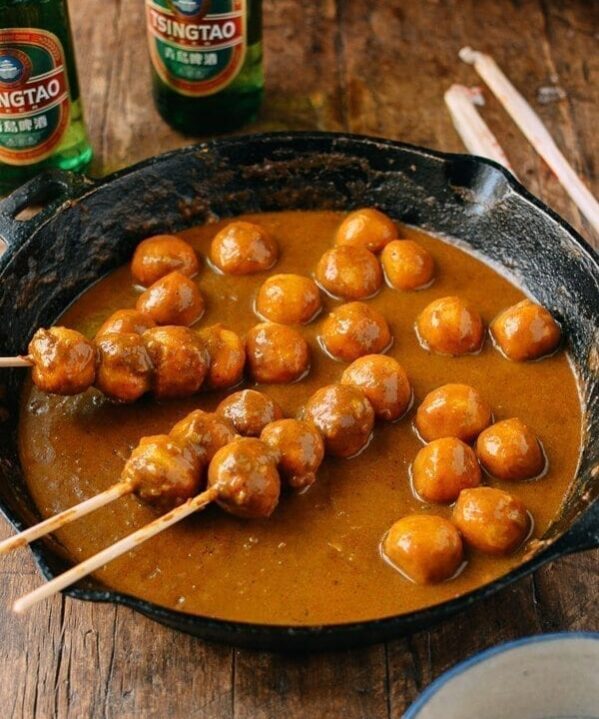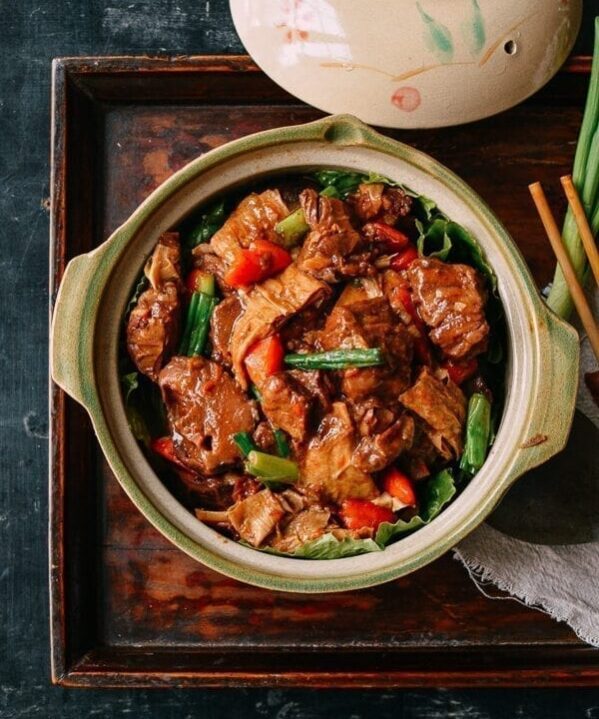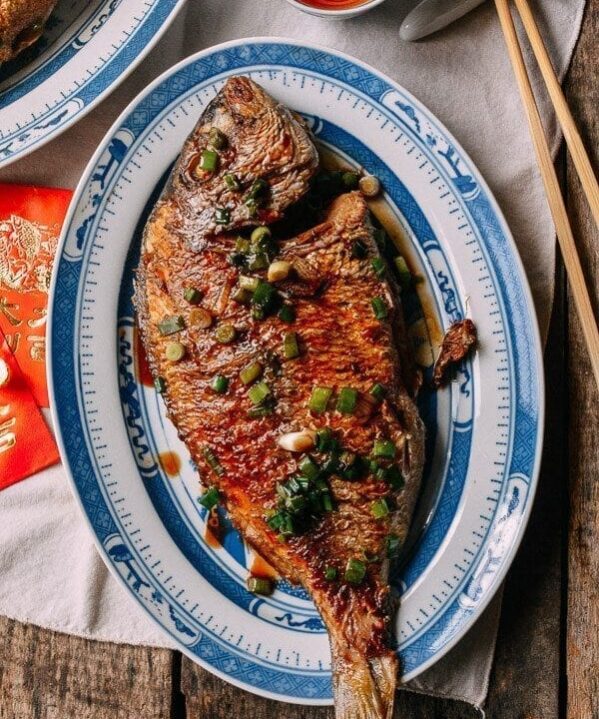A Chinese New Year is not a New Year without fish, and you MUST have two of them: one for New Year’s Eve and one for Chinese New Year’s Day. That’s why, on the eve of Chinese New Year, we’re posting this Chinese Braised Fish (red cooked fish), or hong shao yu recipe for all of you! You have a multitude of fish dishes to choose from including our Cantonese whole steamed fish but this red cooked braised dish is certainly a winner.
As I mentioned in our Chinese New Year Menu post, this tradition is a symbol of abundance. Another tip: never flip a fish over on the plate! Fish can symbolize a boat, and flipping that fish over is like capsizing your boat. Bad, right!? Remember that one, especially if you have any guests or family working on the sea.
As it happens, this Chinese braised fish is my father’s specialty—a dish that he does better than anyone I know. The way my father cooks it is quite unique; he doesn’t add any water to braise the fish, which is almost unthinkable to many…me included.
The first time I saw him cook this braised fish, I was in awe at the amount of wine, vinegar and soy sauce he poured into the wok. One look at the recipe ingredient list might make you think there must be a mistake, but rest assured, it’s right. In fact, it’s exactly why this fish is so intensely good.
Chinese Braised Fish: Recipe Instructions
Using paper towels, pat the fish thoroughly dry. Wrap the fish in fresh paper towels while you prepare the rest of the ingredients. The goal is to make the fish as dry as absolutely possible. Use a sharp knife to score both sides of the fish three times. This will help them cook quickly.
Once the prep work is done, unwrap the fish and dust it with a thin, even layer of cornstarch on both sides. This step will help keep the skin in tact during pan-frying.
Heat the wok until it starts to smoke, and immediately add the oil and ginger slices.
Reduce the heat to medium. Once the ginger slices start to brown, remove them from the wok and set aside. Carefully lay the fish in the wok, and DO EVERYTHING IN YOUR POWER NOT TO MOVE OR TOUCH THE FISH for the next 5 minutes. You can tilt the wok around so the oil glides around to evenly brown the fish.
After 5 minutes, shake the wok slightly to see if the fish has seared enough to stop sticking to the wok. This is when you can carefully flip the fish over and do the same process for the other side.
Once both sides are nicely browned, add the ginger back to the wok…
Also add the scallions, shaoxing wine, sugar, Chinese black vinegar, dark soy sauce, and light soy sauce.
Keep the heat at medium low, and cook the fish by continuously spooning the cooking liquid over the fish.
Cook on each side for 4-5 minutes. By now, the sauce should be cooked down and almost syrupy. Serve!
Tip: If you want to make sure the fish is done, carefully pick apart the thickest part of the fish. If the meat readily comes apart from the bone, it’s done. You can plate it so that the hole you made is facing down!
Serve this Chinese Braised Fish (Hong Shao Yu) at your next dinner party!
If you’re serving this Chinese braised fish for Chinese New year, make sure you cook two and leave one intact for the new year as a a symbol of abundance!
Chinese Braised Fish (Hongshao Yu)
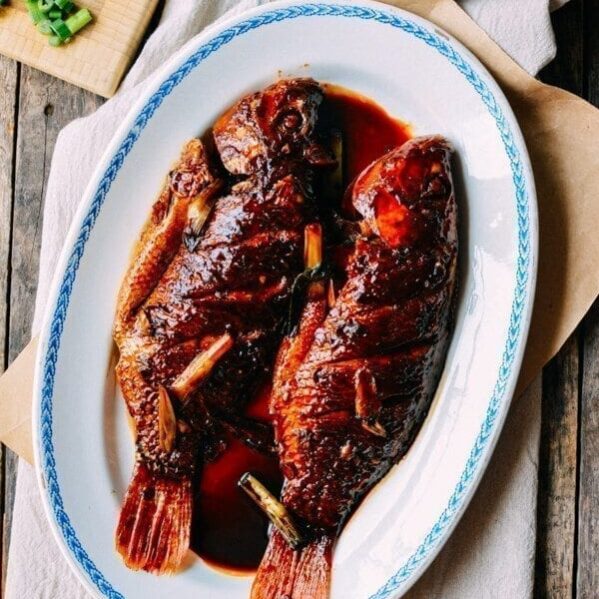
Ingredients
- 2 tilapia (totaling about 2 ½ lbs, descaled and cleaned)
- 2 teaspoons cornstarch
- 3 tablespoons oil
- 6 slices ginger
- 3 scallions (cut into 2-inch pieces)
- 3/4 cup shaoxing wine
- 2 tablespoons sugar
- 2 1/2 tablespoons Chinese black vinegar
- 1 tablespoon dark soy sauce
- 2 teaspoons light soy sauce
Instructions
- Using paper towels, pat the fish thoroughly dry. Wrap the fish in fresh paper towels while you prepare the rest of the ingredients. The goal is to make the fish as dry as absolutely possible. Use a sharp knife to score both sides of the fish three times.
- Once the prep work is done, unwrap the fish and dust it with a thin, even layer of cornstarch on both sides. This step will help keep the skin in tact during pan-frying.
- Heat the wok until it starts to smoke, and immediately add the oil and ginger slices. Reduce the heat to medium. Once the ginger slices start to brown, remove them from the wok and set aside. Carefully lay the fish in the wok, and DO EVERYTHING IN YOUR POWER NOT TO MOVE OR TOUCH THE FISH for the next 5 minutes. You can tilt the wok around so the oil glides around to evenly brown the fish.
- After 5 minutes, shake the wok slightly to see if the fish has seared enough to stop sticking to the wok. This is when you can carefully flip the fish over and do the same process for the other side.
- Once both sides are nicely browned, add the ginger back to the wok along with the scallions, shaoxing wine, sugar, vinegar, dark soy sauce and light soy sauce. Keep the heat at medium low, and cook the fish by continuously spooning the cooking liquid over the fish. Cook on each side for 4-5 minutes. By now, the sauce should be cooked down and almost syrupy. Serve!
- Tip: If you want to make sure the fish is done, carefully pick apart the thickest part of the fish. If the meat readily comes apart from the bone, it’s done. You can plate it so that the hole you made is facing down!
nutrition facts
